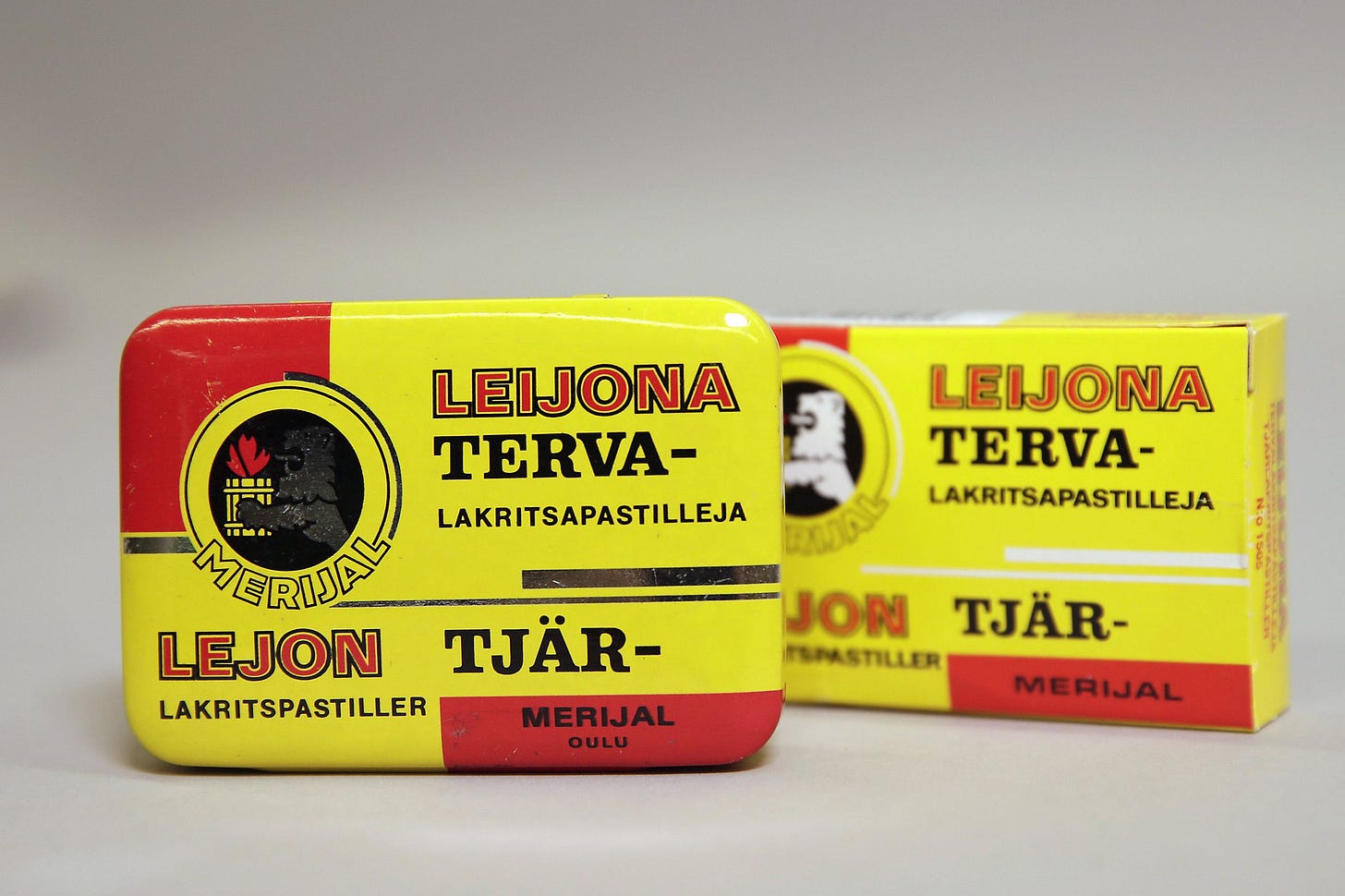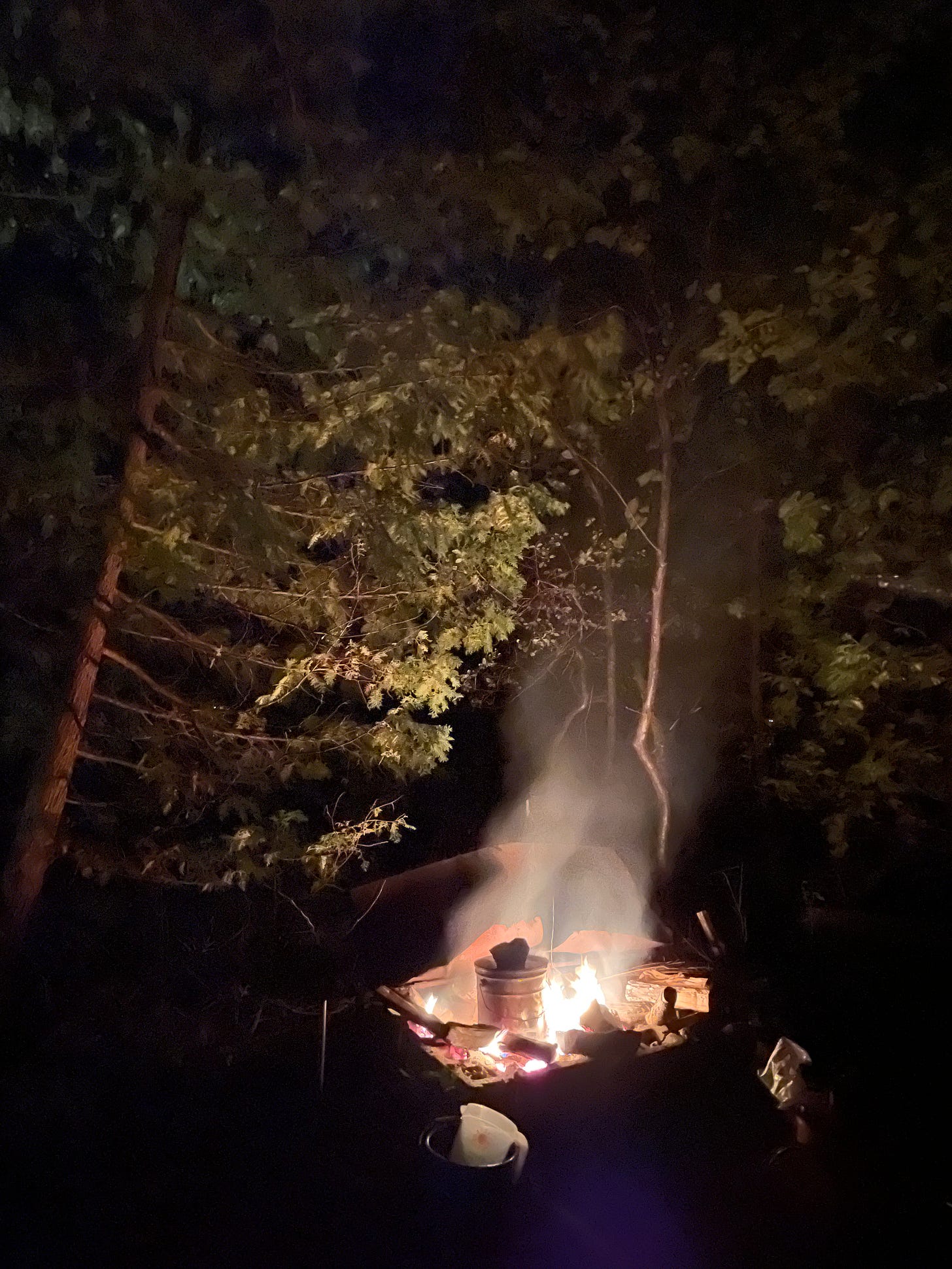An old Finnish proverb says, “If a sauna, vodka, and tar don’t help, the illness is fatal.”
“And when she could no longer hide him, she took for him an ark of bulrushes, and daubed it with slime and pitch, and put the child therein; and she laid it in the flags by the river’s brink.”
—Exodus 2 : 3
For years I had the phase “Pitch Lake” tacked up to the wall in my studio and over the years its become a bit of an idée fixe.
It was the poet Dionne Brand who first made me think about asphalt. She talked about a black bubbling natural reservoir of liquid asphalt called Pitch Lake in Trinidad and its significance for science, medicine, and magic. Having only ever thought of asphalt as a chemical paving material, I was excited to learn that it’s naturally occurring, goes by many names, and has a long and fascinating history. Asphaltic lakes (hellish and on fire) are referenced by Milton in Paradise Lost, asphalt (more often called bitumen) is mentioned in the bible as the sticky slime that held together the tower of Babel and caulked the reed basket that kept baby Moses afloat on whatever river that was. Earlier still, asphalt was used as an embalming material for mummies beginning the origin story for a somewhat dubious pigment called Mummy brown which may or may not have contained actual powdered Egyptian mummies and may or may not have been a bit unstable.
Dionne Brand was on my mind a few years later when I was in LA leading an ink-making workshop in the rain in a back alley off La Brea Avenue. I mentioned the La Brea Tar pits saying to no-one in particular, wouldn’t it be amazing to try to harvest some tar to make into ink. It turned out that one of the participants who overhead me was Aaron Celestian, a curator from the Natural History Museum who just happened to work with samples of the tar pits. The next day we met at the museum, looked at some incredible mineral samples, and talked about the extremophilic bacteria that live in black goo. We also talked about his work with NASA studying the extremophiles hidden in minute drops of water protected by air pockets encased in salt crystals buried deep under the desert lakebeds of Death Valley, which I have written about before. I brought a sample of La Brea Tar in a paper cup inside plastic bag home with me on the plane and made a series of artworks. Part rock, part plant, part oily energy, pitch bubbles from below rich, thick, and brown-black-like liquorice you can set on fire. Tar distills the bodies of dinosaurs, sabre-toothed tigers, dire wolves, and prehistoric ferns. When scraped over paper the goo felt slow and heavy and came with a prehistorically turbulent scent. I am pretty sure the artwork is still drying a couple years later and I’m definitely sure that its still off-gassing.
In 1930 Thomas Parnell the first physics professor at the University of Queensland set up an experiment to measure the fluidity of tar pitch. He set up a blob of this highly viscous black goo in a funnel, warmed it to room temperature, and waited. Eight years later a single drop of tar dripped into a beaker below the funnel. Thomas missed the moment but did get a mention in the Guinness Book of World Records for setting in motion the longest running lab experiment. In the next 87 years, eight more drops of tar have dripped into the beaker, each one missed by observers. The tenth drop will not be missed. I have been watching it on live cam. It hangs like a fat glossy black tear poised to fall sometime in this decade. Or I should say, it is already in the process of superslow falling now. Cool tar down and it becomes a glassy-hard rock, warm it to room temperature, and though it’s a billion times more viscous than water and it looks solid, it’s a moving liquid. Pitch is time itself. Just too slow for us to see.


Asphalt, tar, pitch and bitumen are related and often synonymous words referring to the dense carbon rich goo and sometime glassy rock that gets produced underground by heat and pressure and it bubbles up where tectonic plates come together to expose underground oil. But it can also be made through industrial processing or by an elaborate cooking method perfected in Finland.
Kristine Mifsud, who I wrote about a couple of weeks ago, makes her own birch and pine tar. She gave me a small jar of it when I last saw her. She has used it to try to recreate the first photographic method when tar mixed with lavender oil, and dried in the sun created a washed-away version of a photographic negative. I just wanted to see it in my sketchbook. It’s both intensely brown-black and light-filled, like a bouillon cube or a cloudy sepia toned mirror. It smells like a campfire that’s been burned in a campfire. I knew that tar was used in making paint for the Model T ford and printing ink for newspapers and magazine as well as an ingredient in mummy brown so I figured I could call it an art supply as is.

I tried it on paper as the sun was going down tonight.
Keep reading with a 7-day free trial
Subscribe to The Colour | Newsletter | Lab | Community to keep reading this post and get 7 days of free access to the full post archives.







